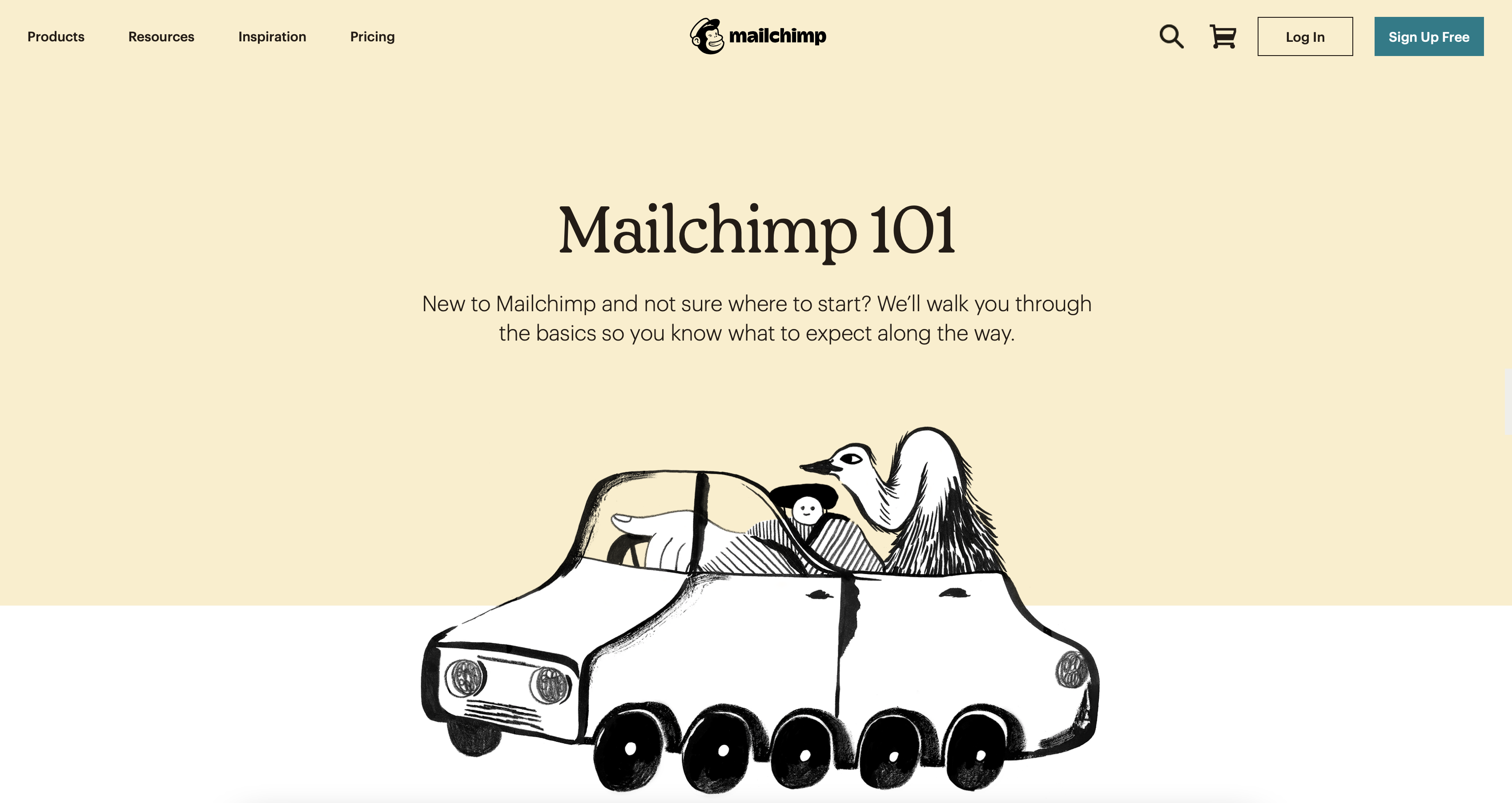Copper Staff
Contributors from members of the Copper team
You don’t need an overly salesy video, hard sales pitch or weekly promotional email to beat out your competitors. Instead of advertising an item that is priced to sell, it pays to put effort into showing the customer value in your product, and how much that will benefit your prospective client’s life.
In this post, we'll look at what value-based selling is, and six steps B2B sales teams can take to sell unique value instead of offering a lower price:
What is value-based sales?
You know you need to add customer value to your product, but it may not be clear how to accomplish this. It comes down to finding ways to make your product irresistible to your potential clients. No, not irresistible in a forced way like a sales person trying to sell you something you've expressed zero interest in, but in a way that ensures a buyer won't think twice about purchasing because of your pricing. You need to convince a decision maker beyond the shadow of a doubt that it will add unique value to their business or lifestyle.
How will your product help a buyer achieve whatever their end goal may be? Focus your sales strategy on value messaging that sells an outcome and not a product.
Let’s look at six ways to implement a value-selling framework throughout the sales process:
#1. Think through your product.
So many companies pour time, money, and energy into building a great product—then rush the sales strategy and hope customers just magically fall in love. But if you want value-based selling to actually work, that kind of shortcut won’t cut it.
The first step? Get clear on what makes your product valuable—not just what it does, but how it helps people.
Start by brainstorming ways, big or small, that your product can help a prospective client. And not just the obvious things either. Get down to the nitty-gritty.
- Can your product help a business boost their productivity in the workplace?
- Does your product only take 5 minutes to learn how to use?
- Can your product respond to customer questions within an hour?
Next, figure out what makes your offer different. Is it faster? Easier? More secure? Built with a unique approach no one else has? Do you offer incredible support or a longer warranty? That’s your edge—use it.
Use these points to develop a marketing and sales enablement strategy that shows buyers how your product can help them perform better in their field, beat their competition, build their business... you get the idea. The key is to aim for their heart — not their wallet.
Once you’ve nailed those benefits, weave them into your messaging. Value-based selling is all about leading with outcomes, not discounts. You’re not just pitching a product—you’re showing people why it matters, how it solves their problems, and what kind of results they can expect. And when you do it well? That’s when the real connection (and conversion) happens.
#2. Don’t pitch too early.
If B2B sales professionals and marketers engage with a customer with only the finish line (aka the sale) in mind, chances are you'll fail before you leave the starting block. This is where value-based sales comes into play.
Some of the best sales pitches don’t start off with a cold sales email telling you about a discount on their course. They involve multiple touches that offer education and value before ever attempting to sell you something.
Don’t be tempted to send your customers a welcome email and then follow it up with a ‘Buy now’ email. Use this first touchpoint to share the different features of your product or business, big or small, that you mapped out in step #1.
Ease your customer into the buying decision with trust.
#3. Take note of what industry leaders are doing.
A lot of businesses overlook this value-based sales tactic, but it’s a game-changer. Some call it competitor research, but it’s really about staying ahead of the curve.
Even if your business is doing great, keeping an eye on what industry leaders and thought leaders are up to can give you fresh ideas and help you stand out. The goal here isn’t to copy what your competitors are doing—it’s to spot the gaps they’re missing and fill them. That’s how you build unique value and avoid competing on price alone.
But it’s not just about watching competitors—it’s also about becoming a thought leader yourself. When you consistently share insights, educate your audience, and provide solutions, people start looking to you as the go-to expert. And that kind of credibility? It makes selling way easier.
So, pay attention to what’s happening in your space. Are there customer pain points that no one’s addressing? Are there opportunities to offer more value through education, better support, or a fresh perspective? By tuning into these insights, you can position yourself as an authority and differentiate your product in a crowded market—without slashing prices.
#4. Be an educator, not a salesperson.
If your approach to selling is just pushing products, it’s time for a plot twist.
The best kind of value-based selling doesn’t even feel like selling. It feels like learning something you actually needed. It feels like someone genuinely helping you solve a problem without shoving a discount code in your face five minutes later.
Want to increase your chances of closing the deal? Stop coming in hot with a sales pitch. Start by being useful.
Mailchimp nails this. Their educational hub? Total goldmine. It’s packed with step-by-step guides, best practices, and real-deal marketing advice—most of which doesn’t even mention Mailchimp.

But guess what? That’s exactly why it works.
By giving away high-quality, no-strings-attached content, they’re selling value without even trying. Whether you’re a customer yet or not, they’re helping you get smarter. And when you do need a tool? You already trust them.
That’s the magic. Give generously from the start. Teach, guide, support—and when you do make your offer, it won’t feel like a sales pitch. It’ll feel like the obvious next step.
Because in today’s world, people don’t want to be sold to. They want to be understood. And if you can show that you get them before asking for anything in return? You’re already way ahead.
#5. Eliminate your buyers' fears.
It doesn’t matter how great your product is or how much value you think you’ve packed into it—if your buyer still has doubts, they’re not clicking that “Buy” button. Plain and simple.
So let’s talk about trust. One of the most underrated parts of a solid approach to selling is tackling those quiet little “what ifs” in your buyer’s head. What if it’s too hard to use? What if it doesn’t actually work for my team? What if I waste my budget?
This is where selling value means more than listing features. You’ve got to show—not just tell—that you can deliver.
Here’s how to increase your chances of getting to “yes”: Start with proof. Case studies, testimonials, before-and-after snapshots—these are gold. Show off the companies who are already thriving because of your product. Whether it’s a quick video or a long-form success story, let your happy customers do the talking.
(At Copper, we make it super easy with a 14-day free trial—so buyers can take the product for a spin without the commitment.)
And if you’re selling to different types of customers or offering multiple tiers, remember: fears shift depending on where someone’s at in the journey. A startup founder might be worried about pricing. A big team might care more about ease of onboarding. Your job is to address those concerns head-on—early and often.
DocuSign’s a great example of this. Their Customer Stories page is a buffet of real-world wins from all kinds of industries, offered up in both video and written format so buyers can engage however they want. They’re not just talking about value—they’re showing it, loud and clear.
So don’t leave your prospects hanging with unanswered questions. The more confidence you build, the easier it is to guide them toward a yes. Because in value-based selling, trust isn’t a bonus—it’s the whole foundation.
#6. Highlight the personal benefits of using the product.
This is arguably the most important aspect of a value-selling framework: touching on customers' pain points and clearly showing them how much they'll personally benefit from your product.
This can be done in many ways. For example, value messaging could look like marketing your product as something that can boost your customers' happiness, confidence, or productivity.
Don’t underestimate this step when you're planning how to add value to your product, as the strongest impulse on your customer’s buying journey will be emotion.
A powerful example of this, that is also out-of-the-box in its approach, is Volvo’s Moments That Never Happened commercial.
The ad tells an emotional story of a father-to-be imagining all the precious moments he'll share with his future daughter—her first steps, childhood adventures, and teenage milestones. As the story unfolds, we see the mother crossing a street when a Volvo’s safety system automatically stops the car, preventing what could have been a tragic accident. The message? Sometimes, the moments that never happen matter the most.
Volvo doesn’t focus on features, horsepower, or sleek design—it focuses on why safety matters. By tapping into universal human emotions—love, protection, and family—the brand reinforces its reputation as a leader in automotive safety.
Value-based sales isn't always about the product itself; it's also about what your brand stands for. Volvo’s ad doesn’t just sell a car—it sells peace of mind and the ability to cherish life’s most important moments.
Be human and help solve people's problems.
Selling a product takes a lot more than just picking a price and loading it in your eCommerce system—especially in the B2B space. The groundwork and strategic thinking behind how to appeal to your customers might seem overwhelming, but it's an important step in a value-selling approach and will go a long way to prepare buyers for a sales conversation.
Using a CRM like Copper helps businesses stay on top of their value-selling game by keeping track of customer needs and conversations—so every interaction feels more personal and less like a sales pitch. Try it now for 14 days for free!
Regardless of how your product is priced, a value-based sales process can be an effective way to persuade potential customers to make the purchase. If as sales leaders, you focus on getting into buyers' heads and solving their problems, you'll be on the right track.






